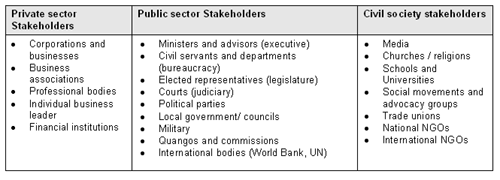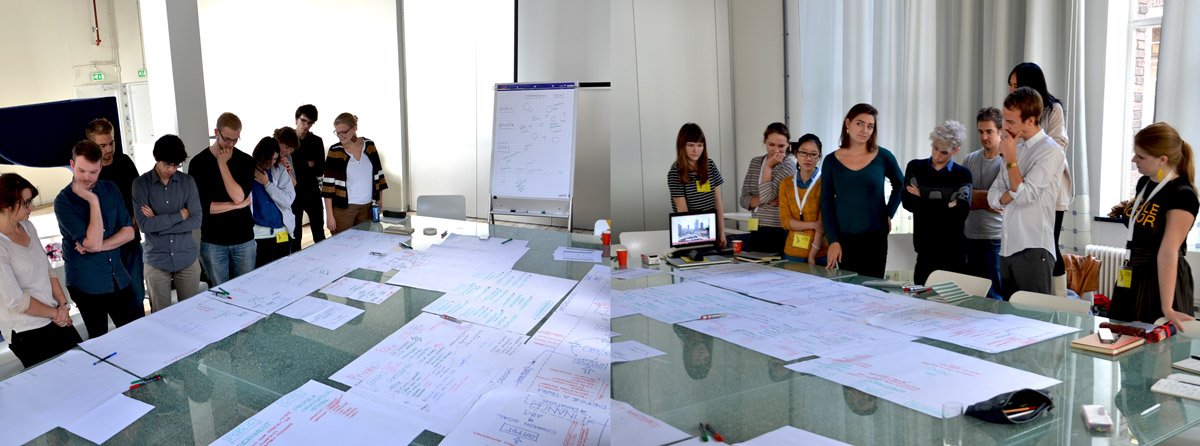#GC2022 is accepting submissions - 25d 27h 05m 44s
As the global and local scales come ever closer together, geographic and/or societal distances between local scales become less of an obstruction for professionals. The rise of socially conscious architecture and urbanism which crosses economic and geographic borders testifies of this change. It begs the question how architects and urbanists should adapt their approach and attitude. Globalization notwithstanding, crossing border requires adapting to a new context. During the Urbanism Week, a workshop by Architecture in Development explored this challenge through two test-cases.
What are the roles of architects in a bottom-up practice?
Recently I attended several presentations and lectures in both the academic and professional scenes. One question that arose often in the discussions resonates in my mind: what are the new roles of designers and planners in today's bottom-up practice?
The question is becoming part of the discourse again since the recession has profoundly changed the job market, career choices, and the clientship in the design and planning industry. For the last few decades, our profession has turned its back towards people's needs and urgencies; most of us were known for working with top-down players, focusing primarily on generating more economic value.
Things have changed rapidly in the last few years. It is becoming a widely recognized fact that today's formal architectural practice serves only a few of the world's population1. This means that the majority of our built environment consists of so-called do-it-yourself structures, which are often temporary, make-shift, or illegal and thus often exist in a precarious status.
Handmade Urbanism - from community initiatives to participatory models
Let's talk about people, not the icons
So what can we do and what can we learn from the lives that the profession once ignored? Since the launch of our website, we have been crowd-sourcing worldwide case-studies that unveil the specific social, cultural, economic, and environmental contexts of architecture by the people2. When zooming into the lives that created or inhabit this architecture, we see people and communities seeking ways to improve their own daily life. In most of the cases, they need a place with more social and economic security. We also see examples, especially in the global south, where people are in urgent need of basic infrastructure. Legal and financial issues, among others, have made tackling the housing issues of this majority of population extremely complex. Though it seems that state and local governments are increasingly interested in a participatory approach, when looking around the world, informal settlements continue to be demolished and replaced by new icons or by apartment flats that are unaffordable. So a contradiction takes place: the planning authority aims to create a sustainable city that is unable to sustain the life that inhabits it.
When we look at the cases of grass-roots, community-led, or bottom-up initiatives, they often incorporate more social, cultural and environmental value than the government-led, top-down projects. In these cases, people have taken the responsibility to improve their environment with their own hands, and throughout the process they build trust, friendship and a sense of ownership that are unable to be created by someone outside of the community.
But these community-based initiatives can be vulnerable and temporary if they aren't recognized or supported by the local institutions, become legalized, and gain the ability to be financed or to scale up.
That's why building new relationship matters
Partnership is crucial for communities that lack resources, but it's also important for designers and planners who want to practice sustainability. Building new alliances or partnerships in various phases of planning, design, construction and maintenance can help the vulnerable communities to connect with the necessary resources, such as financial, legal, technical or network support that will help improve the long-term economic, social, and cultural development.
Between the bottom-up and top-down, there is a new field of operation which is not yet considered as part of our professional job. Yet there are an increasing amount of architects who take on this responsibility, proactively participating in the community to understand their needs and to engaging partners to find a shared solution.
In order to extend design-planning services to reach the under-served, we must investigate tactics and strategies in a new operational model: who are the change agents? Who are the designers, funders, partners, facilitators and other partners that are indispensable?

Photos from our workshop during Urbanism Week, TU Delft
Design the process and the stakeholders
The purpose of this workshop was to find a development strategy and a team structure for creating a shared sustainable vision together with the communities. It was also an exercise to investigate the co-relationships between different stakeholders in various phases of a project - rather than looking at the autonomous roles as designers or planners. For a two-hour workshop session, we chose two cases - Torre de David and Makoko Floating School where a complex network of stakeholders was explored.

Left: Torre de David | Right: Makoko Floating School
To help focus on the design of the stakeholders and the process, a scenario was given to the participants. The scenario was that the slum dwellers improve their living condition and become legal owners of their properties3. In these two cases, the main task for the participants was to identify the key actors during the planning, design, construction and maintenance phases. Who are the necessary partners/ organizations to achieve the given scenario? What are the obstacles and wishes of each stakeholder?

example stakeholder analysis from ODI
The tactics and strategies in a bottom-up practice

Photos from our workshop during Urbanism Week, TU Delft
To end the workshop, the participants were asked to map out the process with all the stakeholders discussed. These illustrations concluded our workshop and suggested some basic tactics and strategies in a bottom-up practice:
1. Think and act as the community: Both of the work groups identified 'the community' as the main stakeholder, and thus the groups thinks/ acts as the community representative. So the other roles concerning funding, legal issues and technical issues are all designed according to the wishes and needs of the community.
2. Between money and power: One of the work groups proposed 'internal funding', that is the generation of funds from within the community instead of from external financial organizations such as banks, state funding, etc. Internal funding means that the community invests in its own place, which enhances a sense of ownership and pride of the community.
3. Turn conflict into a possibility: Issues of conflicts between the local municipality and the gangs were discussed in one of the work groups. How can we use the conflicts to have better dialogue between various stakeholders? How can we use conflicts as a tactic to align different interests?
4. Cooperation in a barter economy: To involve companies in sharing their resources, both work groups suggested 'exchange of skills and materials'. For example, an engineering company and the local community can exchange their knowledge about the modern and traditional techniques; a material supplier can provide free materials in exchange for free access to the communal space.
4. Redefine architects' responsibility: So what role do architects play in both of the cases? 'It seems that the communities do not need an architect...'; some are pessimistic about the future of architectural practice. Reflecting on this, some in the group suggested instead that architects are becoming even more necessary in a community practice. Architects are the ones who can communicate a vision most effectively by sketching, through physical models, storytelling or by imagination. All these are powerful tools to connect various stakeholders with conflicting interests.
It is becoming obvious that there is enough work for architects who have much to contribute, only we must recognize a new role in relationship to others. When drafting ideas, it's no longer just a personal, artistic impression but it's the visual translation of wishes and hopes of the people - a vision that inspires dialogue, responsibility, pride, and cooperation.
With special thanks to Joost de Bont and Maarten Kempenaar who co-operated the workshop.
Footnote:
[1] In the book Expanding Architecture: Design as Activism, professor Thomas Fisher mentioned that '...architects directly affect only about 2-5 percent of all that gets built'. Its inverse, "Designing for the 98% Without Architects," was the title of Design Corps' 2000 conference and serves as a working motto for the nonprofit studio since then.
[2] Architecture by the people has become a phenomenon addressed in various publications, with different expressions such as Architecture without architects (by Bernard Rudofsky) or Do-it-yourself architecture (by Boundaries · International Architectural Magazine).
[3] In the cases of Torre de David, the low income families have been evacuated and relocated to the further peripheries of the city. In the case of Makoko Floating School, the school is not yet permitted by the local municipality thus the community people have not yet full access to the school building.